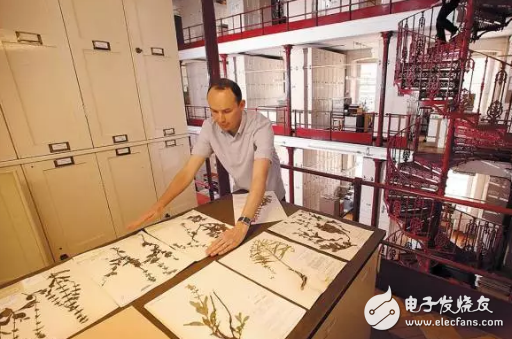Deep learning is a method of artificial intelligence technology. It usually uses a large data set to train the neural network, and finally obtains the result of the problem with higher accuracy. Deep learning has evolved from rapid development to practical application. In just a few years, it has changed the algorithm design ideas in many fields such as speech recognition, image classification and text understanding. Recently, scientists have successfully applied deep learning algorithms to complex plant classifications.
According to a study published in the August 11th issue of the BMC Journal of Evolutionary Biology, researchers used the deep learning method to successfully identify images of thousands of plant specimens, and artificial intelligence succeeded. Classification. This is the first time researchers have tried to apply artificial intelligence technology to the field of species identification. Peter Wilf, an ancient botanist at Pennsylvania State University, said this was the first attempt, but certainly not the last attempt. This technology is the future of the field of species identification classification in the natural sciences.

The researchers used a scanned image of 260,000 plant specimens to train deep learning algorithms, which have more than 1,000 species. The algorithm eventually identified these species with an accuracy of close to 80%. Wilf says this is much better than human taxonomists.
Today, natural history museums around the world are competing to digitize their collections, placing their specimens in public databases, allowing researchers anywhere to use specimens. For example, the National Science Foundation's iDigBio project is actually a data aggregator with more than 150 million images of plants and animals from all over the country.
There are approximately 3,000 herbariums in the world, and it is estimated that these herbariums contain 350 million specimens, of which only a small portion is digitized. However, the ever-expanding specimen dataset and advances in computer technology have attracted the attention of Erick Mata-Montero, a computer scientist from the Costa Rican Institute of Technology, and Pierre Bonnet, a botanist at the French Agricultural Research Centre. They always feel that these huge specimen data There will be some other uses.
Bonnet's team has automated plant identification through the pl@ntnet project. Pl@ntnet is an app developed by French researchers based on deep learning technology. It has accumulated millions of plant images and can automatically identify some plants. These plant images are usually taken by people using smartphones. The more image data is uploaded, the more accurate it is. In addition, it will ask the photographer if the plant in the image is a flower or a leaf to increase the accuracy of the recognition.
Bonnet said that although this artificial intelligence technology has greatly improved the efficiency of botanists in plant identification classification, some botanists worry that this high-efficiency technology will lower the threshold in the field of botany and make people feel that botanists There is no professional technical value. But Bonnet insists that this artificial intelligence technology is very useful because it is based on human expertise. It will never eliminate human expertise. Moreover, botanists also need to finalize the results of this technique.
This new technology can help botanical libraries quickly process new samples and simplify a daunting task that takes hours of work. In addition, Bonnet said, this technology can also help small plant herbariums to identify species more effectively. His team found that deep learning algorithms for large data sets obtained from large herbariums have improved the identification of plant species in the herbarium that is relatively lacking in the world. This finding is especially useful for areas that are rich in biodiversity but have few collections of plant specimens.
This artificial intelligence species identification technology is not limited to plant specimens. Nelson is currently working to achieve automatic identification of fly larvae. In addition, the ancient botanist Peter Wilf is working with people to perform similar analysis and identification of plant fossils. The analysis of plant fossils is quite difficult because of the variety of plant fossils, such as petrified fruits and flowers, petrified trunks or petrified leaves imprinted in rocks. In contrast, the identification of plant specimens is much easier, they are flat, dry, and are usually placed on standard-sized paper.
In short, some of the museum experts, including Wilf, are very convinced that this deep learning technology will gradually solve various classification problems and will eventually become the basic technical means in the field of species identification.
Product categories of Disc Stylus Pen, We are the specialized manufacturer of Stylus Pen from China. Disc Stylus Pen no need to charge, you can use it directly, it is universal, it is compatible with all brands capacitive touch screens, such as Apple, Huawei, Samsung, Xiaomi, Microsoft, Google Chrome, ect. OEM / ODM are welcome, looking forward to our cooperation.
Disc Stylus Pen,Digital Stylus Pen,Cute Ballpoint Pen,2 In 1 Stylus Pencil
Shenzhen Ruidian Technology CO., Ltd , https://www.wisonens.com